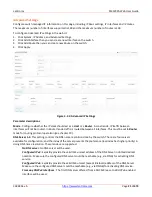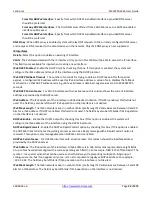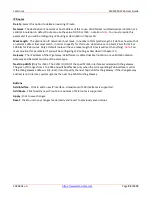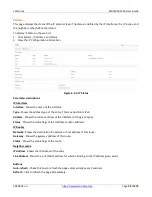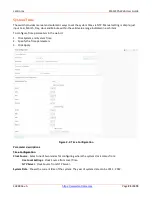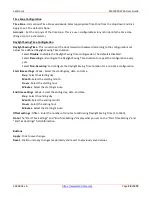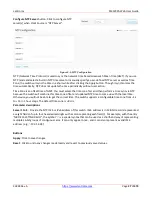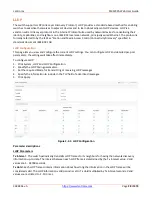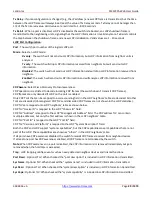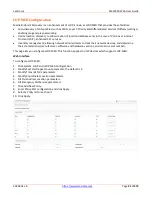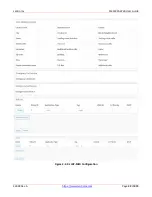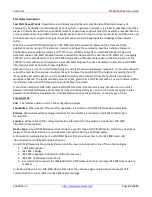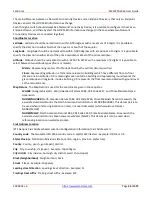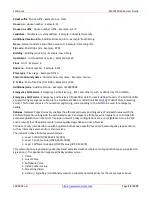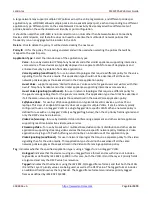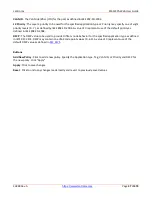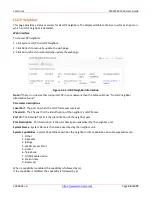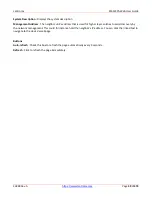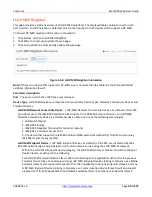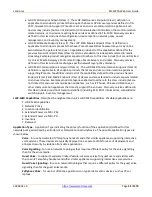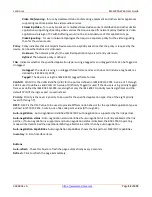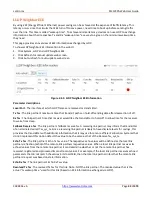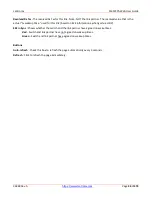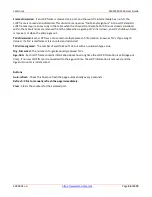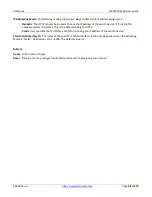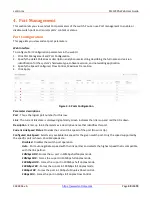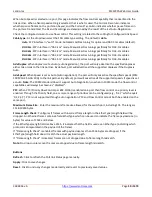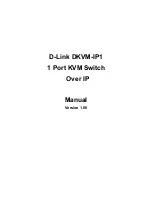
Lantronix
SM12XPA Web User Guide
33848 Rev. A
Page
35
of
473
Street suffix
: Street suffix - Example: Ave, Platz.
House no.
: House number - Example: 21.
House no. suffix
: House number suffix - Example: A, 1/2.
Landmark
: Landmark or vanity address - Example: Columbia University.
Additional location info
: Additional location info - Example: South Wing.
Name
: Name (residence and office occupant) - Example: Flemming Jahn.
Zip code
: Postal/zip code - Example: 2791.
Building
: Building (structure) - Example: Low Library.
Apartment
: Unit (Apartment, suite) - Example: Apt 42.
Floor
: Floor - Example: 4.
Room no.
: Room number - Example: 450F.
Place type
: Place type - Example: Office.
Postal community name
: Postal community name - Example: Leonia.
P.O. Box
: Post office box (P.O. BOX) - Example: 12345.
Additional code
: Additional code - Example: 1320300003.
Emergency Call Service
: Emergency Call Service (e.g., E911 and others), such as defined by TIA or NENA.
Emergency Call Service
: Emergency Call Service ELIN identifier data format is defined to carry the ELIN identifier
as used during emergency call setup to a traditional CAMA or ISDN trunk-based
Point). This format consists of a numerical digit string, corresponding to the ELIN to be used for emergency
calling.
Policies
: Network Policy Discovery enables the efficient discovery and diagnosis of mismatch issues with the
VLAN configuration, along with the associated Layer 2 and Layer 3 attributes, which apply for a set of specific
protocol applications on that port. Improper network policy configurations are a very significant issue in VoIP
environments that frequently result in voice quality degradation or loss of service.
Policies are only intended for use with applications that have specific 'real-time' network policy requirements,
such as interactive voice and/or video services.
The network policy attributes advertised are:
1. Layer 2 VLAN ID (IEEE 802.1Q-2003)
2. Layer 2 priority value (IEEE 802.1D-2004)
3. Layer 3 Diffserv code point (DSCP) value (IETF RFC 2474)
This network policy is potentially advertised and associated with multiple sets of application types supported on
a given port. The application types specifically addressed are:
1. Voice
2. Guest Voice
3. Softphone Voice
4. Video Conferencing
5. Streaming Video
6. Control / Signalling (conditionally support a separate network policy for the media types above).

